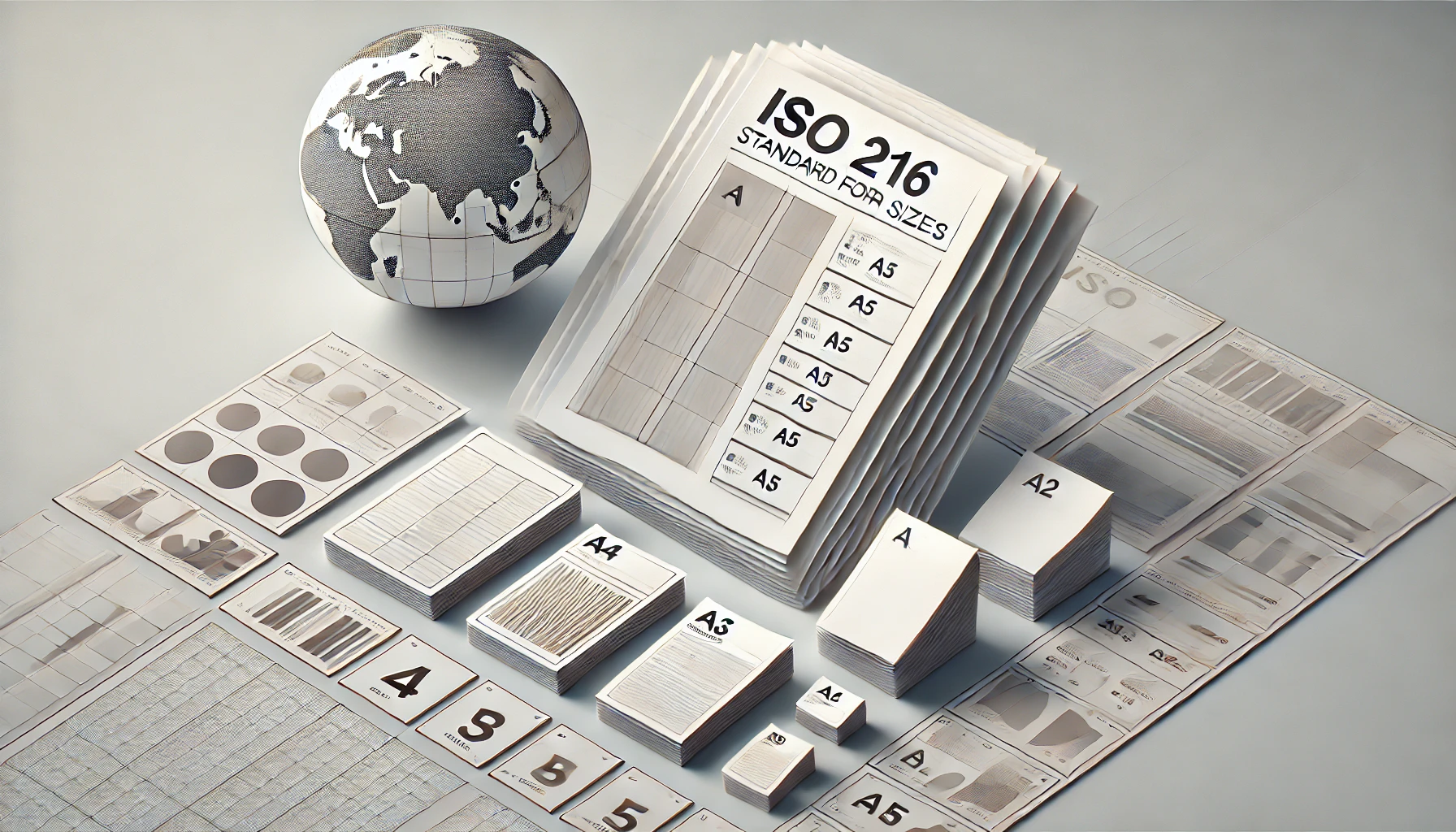ISO 216 is the international standard that defines paper sizes. It is used all around the world, except in North America and parts of Latin America.
ISO paper sizes are based on the metric system. The most commonly known paper size is A4 size, part of the A series. The A4 size paper is the most commonly used printing paper in most countries.
The Elegance Of The ISO 216 System
The elegance of the ISO 216 standard lies in the fact that the height-to-width ratio of all pages is the square root of two (1.4142 : 1). In other words, the width and the height of a page relate to each other like the side and the diagonal of a square.
This aspect ratio is especially convenient for a paper size. If you put two such pages next to each other, or equivalently cut one parallel to its shorter side into two equal pieces, then the resulting page will have again the same width/height ratio.
Thus if you cut in half an ISO 216 paper across its length, you get the next, smaller size of paper. In practice, cutting in half for example an A4 sheet will result in two sheets of A5 paper.
In addition, the A series are designed in such a way that the area of an A0 sheet is exactly 1 square meters. Consequently, each of the following sizes is half of the previous one. Thus an A1 sheet of paper is 1/2 square meter, an A2 paper is 1/4 m2 etc.
Illustration
This illustration helps understand how the paper sizes work in the ISO 216 system.

